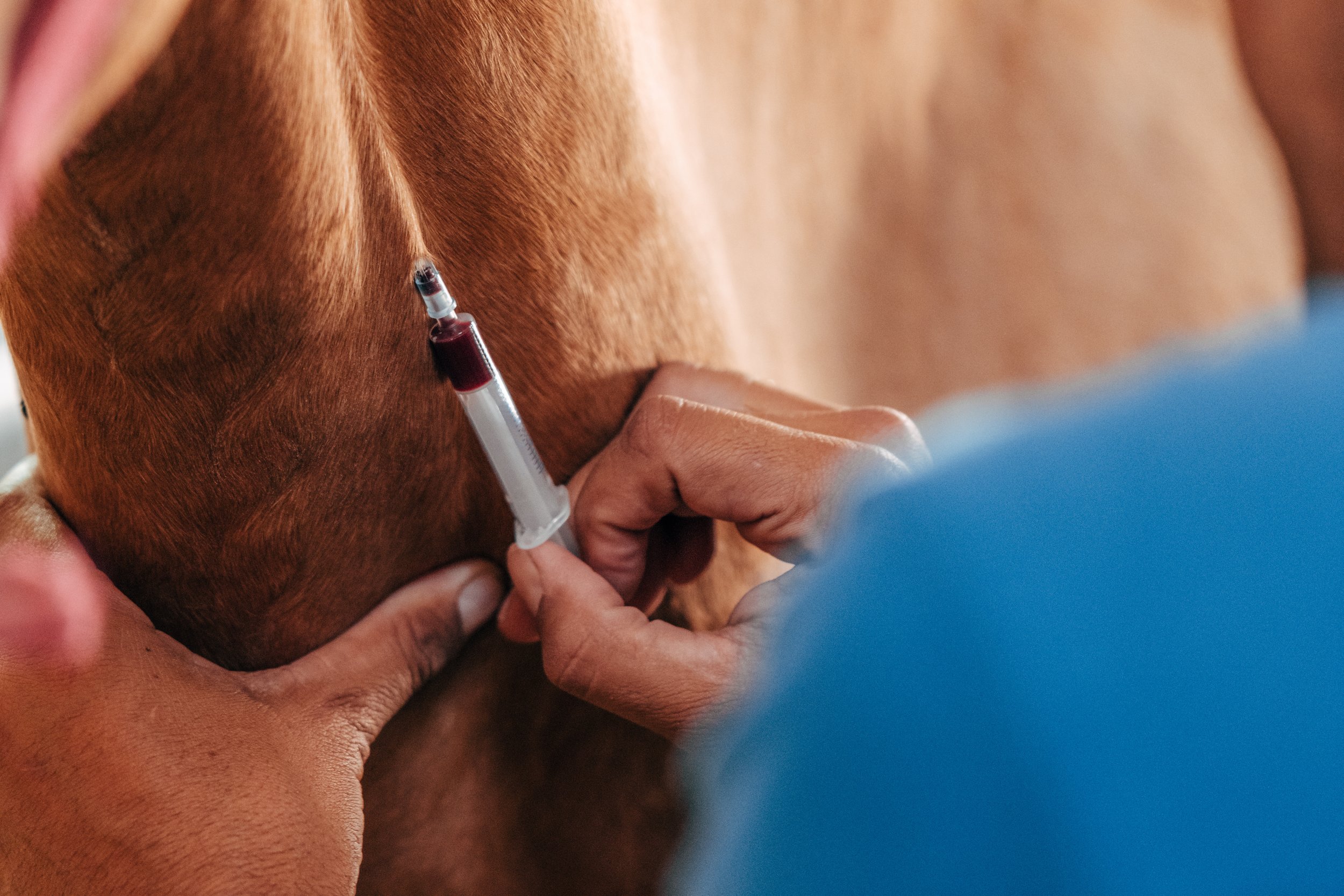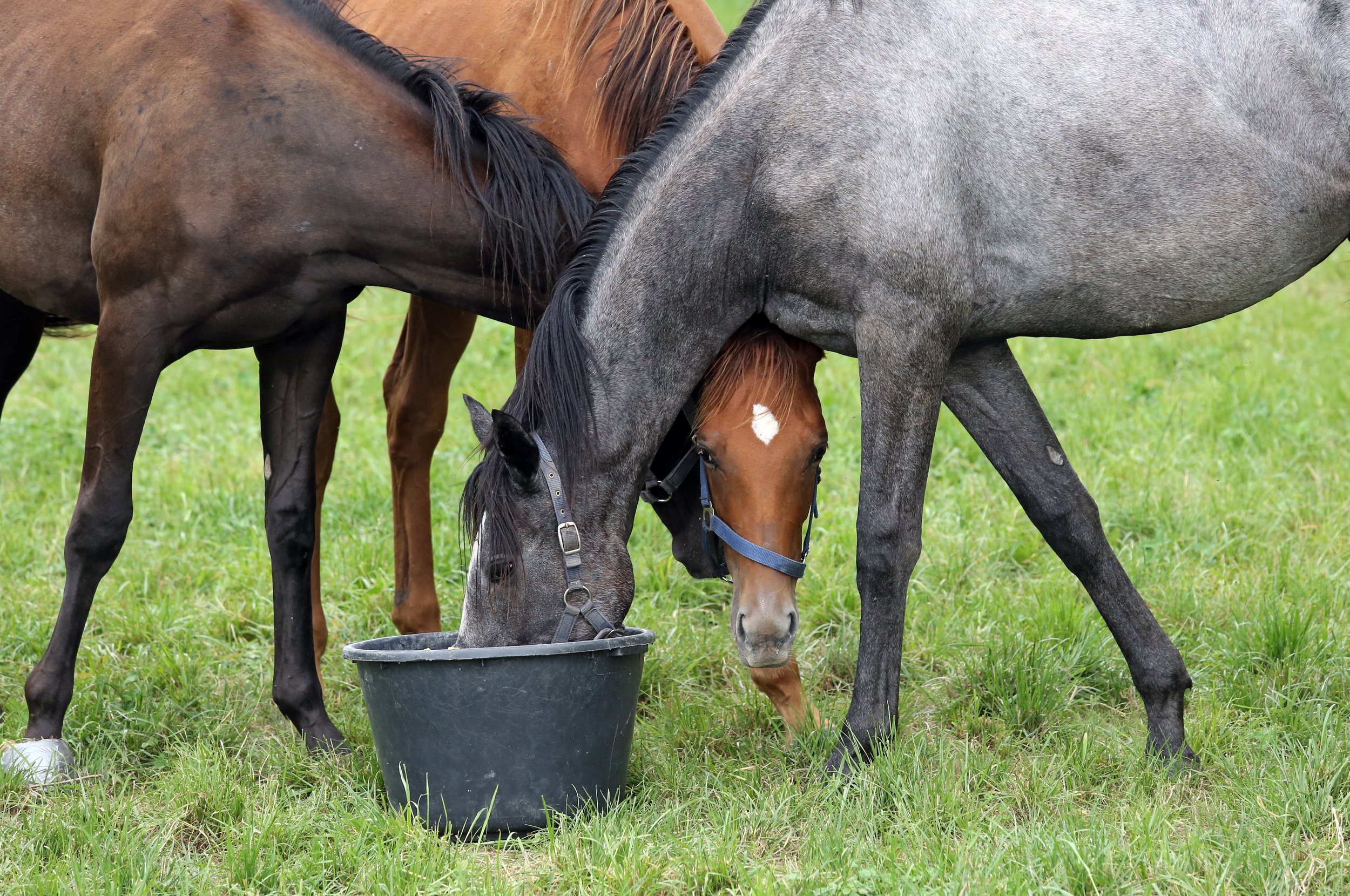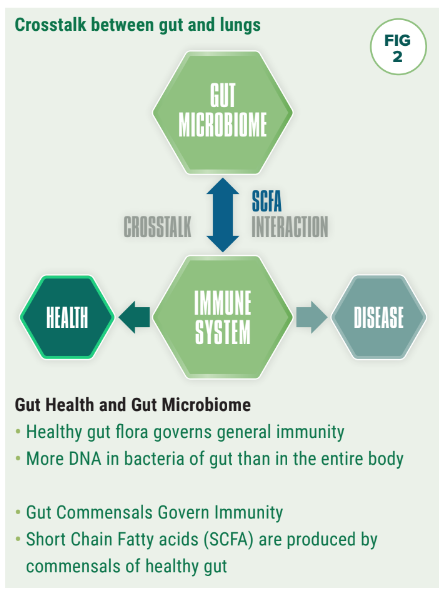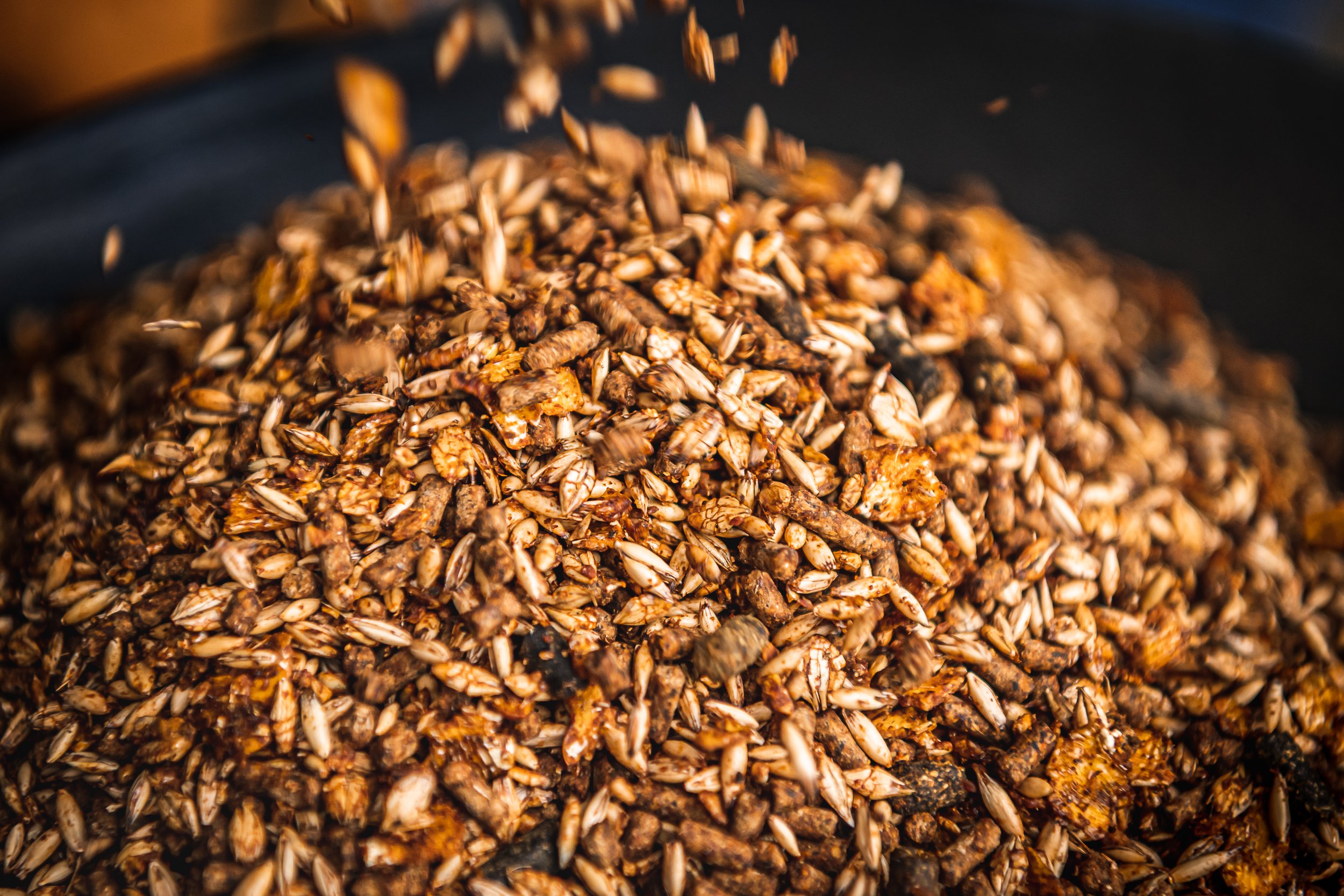Bacterial gut diversity - new research!
/Words Alysen Miller
The link between a healthy gut and overall health in both humans and equines has long been promoted by scientists and veterinarians.
Now a new study by the University of Surrey provides the clearest link yet between gut health and athletic performance in Thoroughbred racehorses, and identifies a “critical window” for immunological development which may provide owners and trainers with a glimpse into a racehorse’s future success on the track.
The study, published in the journal Scientific Reports, found that the composition of gut bacteria at just one month old can predict future athletic performance – measured by BHA official ratings (OR), earnings and placings – with a greater diversity of gut bacteria associated with better performance metrics. The study also found that foals with lower bacterial diversity at just 28 days old had a significantly higher risk of respiratory diseases and even soft tissue injuries later in life.
The study’s lead, Professor Chris Proudman, has dedicated his career to equine gastrointestinal health; first as a veterinary surgeon specialising in the clinical management of colic cases and latterly as head of the University of Surrey’s School of Veterinary Medicine. Since stepping down as Head of School last year, he now devotes his time to horse gut research. “I’ve got a small group of people investigating various aspects of intestinal health in horses, particularly around bacterial populations associated with health and disease,” he tells Trainer Magazine. The latest study is the culmination of more than a decade’s worth of research into the influence of gut bacteria on the development of immunological competence and susceptibility to disease. “I was aware of emerging evidence in the human field to suggest that these early life gut bacteria are really important in priming the immunological system and effectively setting up humans or animals for a healthy life in the future,” he says. “So with funding from ALBORADA Trust [the study’s sponsor], this was an opportunity to look in more detail at the impact of early life experiences in foals.”
So how does gut bacterial community structure in the first few months of life predict the risk of specific diseases and athletic performance in racehorses? To answer that question, Professor Proudman and his team performed DNA sequencing on faecal samples from 52 Thoroughbred foals born across five stud farms in 2018. These samples were collected at nine sample points within the first year of the foals’ lives: at 2, 8, 14, 28, 60, 90, 180, 272 and 365 days old. In addition, weekly written or verbal health updates were obtained for all horses reporting any veterinary investigation or treatment for orthopaedic, soft tissue, respiratory or gastrointestinal disease or injury. The researchers then compared this with the horses’ athletic performances at 2 and 3 years old: finishing position and OR were obtained after every race start, while total prize money earnings and cumulative performance metrics (total starts, total placings, total wins) were collected for all race starts until the end of December 2021.
The findings were striking. Not only did researchers observe that the athletic performance of the foals was positively associated with higher faecal bacterial diversity at just one month old, they also identified that a higher abundance of the bacteria Anaeroplasmataceae was associated with a higher OR, and increased levels of the bacteria Bacillaceae at 28 days old were linked to higher race placings. “We weren’t necessarily expecting to see [a correlation between gut health and performance], so the fact that early life gut bacteria influenced athletic performance came as a bit of a surprise to us,” admits Professor Proudman. “But it is consistent with the whole picture around health,” he continues. Professor Proudman is hesitant to attribute too much importance to the precise identity of the bacteria that were present: “I think what is probably more important is what those bacteria are doing, the mechanism by which those bacteria are affecting the animal, and we don’t understand that at the moment,” he suggests. The two different bacteria identified “could potentially be doing the same thing or they could be doing different things,” he continues. “It’s just an indication that there are bacteria that have a beneficial effect.” Further study is planned to try to identify in more granular detail the precise bacteria that are important to a horse’s performance. Nevertheless, the findings are the best evidence to date of a causal link between gut health and athletic aptitude: “This is really hard science that there are measurable beneficial effects both in terms of health and in terms of performance associated with diversity of the gut bacteria, and also with species of bacteria if they are present at this very early stage in life,” says Professor Proudman.
The concept of a “critical window” for immunological development is not new. Many lines of evidence point to the existence of such a period, during which time the immune system can be “trained” to tolerate particular microbes, and thus avoid later destructive immunopathology associated with these same microbes. While the window has been demonstrated in laboratory animals, “humans studies haven’t really been able to nail down the time period,” says Professor Proudman. “Most of the human studies state that it’s somewhere between birth and weaning,” he continues. “That’s a window of about 6-8 months for a lot of human babies. Because we were able to sample our foals very frequently during the first six months of life, we’ve been able to identify with a reasonable degree of accuracy a critical window for performance that happens very, very early – the first 28 days,” says Professor Proudman. Again, Professor Proudman is cautious about drawing a hard line at the 28-day mark: “I wouldn’t obsess about 28 days exactly – I think this is just telling us there’s something really early in life, in the first few weeks, which is the critical period,” he says.
It is not only future athletic performance which is determined within this critical window; higher bacterial diversity at 28 days old was significantly associated with a reduced risk of respiratory diseases later in life. “It’s likely that what we’re looking at here is the process of immunological priming,” explains Professor Proudman. Immunological priming is the process by which a host improves its immune defences following an initial pathogenic exposure, leading to better protection after a subsequent infection with the same – or different – pathogens. Or to put it another way: “When the horse (or any animal) is first born, the body has to learn to recognise the difference between the ‘self’ and the ‘non-self’ – the potential organisms, bacteria and viruses that are trying to invade the animal. And then it learns to fight those off,” explains Professor Proudman. “But there’s an initial learning period – this so-called period of immunological priming – and it seems that bacterial composition of the gut is important because the gut is a really important interface between the animal and the external environment,” he continues. “And that’s where this immunological priming takes place.
“This is the area in which most of the human research has been done, particularly around respiratory disease. And there’s really good evidence in both human and animal models that the gut microbiota have a significant impact on the development of the early immune system very early in life. So it’s highly likely, although we didn’t look at it specifically in our study, that this is an immunological effect that we’re seeing.”
Researchers also identified a positive association between the abundance of the particular bacteria Streptococcaceae and Moraxellaceae and the risk of soft-tissue health events such as infected wounds, cellulitis and abscesses. “There are specific bacteria that we know cause soft tissue infections,” explains Professor Proudman. “And again, it’s that resistance to bacterial infection that is mediated by the immune system.”
But where do these bacteria come from, and what could the answer mean for the way racehorses are bred and reared? The answer appears to be partly nature and partly nurture. Your gut is full of trillions of bacteria and other microbes help you digest food and support immune, heart and brain health. These are known collectively as the microbiome. It has long been thought that foals (and humans) are first exposed to microbes when they pass through their mother’s birth canal. However, evidence from human studies suggests that babies may come into contact with some microbes while inside the womb. A follow-on study by Professor Proudman’s team, scheduled to commence in early 2025, aims to identify where exactly the bacteria come from by tracking pairs of mares and their foals. But for now, “it’s a question that we don’t currently have an answer to,” concedes Professor Proudman. “People have had theories and you can make plausible explanations of where they might come from. Extrapolating from humans, the suggestion is that a lot of those bacteria actually come from faecal contamination of the foal by the mother. But there’s some really intriguing evidence around breast milk, for example.”
Certainly, the gut microbiome continues to diversify as the foal matures, suggesting environmental factors play a role. This includes the food they eat as well as factors such as whether antibiotics are administered. Ah, antibiotics. The epidemiological elephant in the room. Any discussion around antibiotics inevitably leads back to antibiotic resistance. Also known as antimicrobial resistance (AMR), antibiotic resistance is when bacteria change so antibiotic medicines can't kill them or stop their growth. This makes certain bacterial infections difficult to treat. AMR is caused by the misuse and overuse of antimicrobials in humans, animals and plants. The World Health Organisation has identified AMR as one of the top global public health and development threats. (It is estimated that bacterial AMR was directly responsible for 1.27 million global deaths in 2019 and contributed to 4.95 million deaths.) So what does this have to do with racehorses? Professor Proudman’s team also investigated the long-term impact of foals receiving antibiotics during the first month of life. It was found that these foals had significantly lower faecal bacterial diversity at 28 days old compared to other foals who did not receive such treatments. Further analysis revealed that these foals won significantly lower prize money earnings (an indicator of athletic performance) in their subsequent racing careers. In addition, foals who received antibiotics during their first 28 days of life had a significantly increased rate of developing a respiratory disease compared to their counterparts.
While the study does not necessarily demonstrate causality, “we can demonstrate an association between an event, in this case the composition of the microbial community in the gut and a downstream outcome which is either a health related event, or performance,” explains Professor Proudman. “We go to pains in the paper to say we can’t prove that it’s causal,” he emphasises. “However, as we say in the paper, we do believe that a causal association is a credible interpretation of our data. And one of the strongest reasons for this is simply the timeline. We’ve got something happening early in the animal’s life that is then leading to something that happens much later on in the animal’s life. A plausible explanation is that the antibiotics are hitting the gut bacterial population, disrupting it, and then that, in turn, is disrupting immunological development, which leads to an animal that is more susceptible to respiratory disease.”
While it is recognised that antibiotics play a vital role in treating infections and protecting the long-term health of foals, Professor Proudman is clear that they need to be used responsibly: “[AMR] can develop in animals and then transfer to humans and vice versa. So it helps everybody to minimise the use of antibiotics. Even accepting that some foals need to have antibiotics for medical reasons, if there’s something we can do to minimise the damage that those antibiotics do to gut bacteria, that's the question we’re asking.”
So what are the implications of this research for the racing and breeding industries? “I suspect the gut microbiome is only part of the story,” says Professor Proudman. “There are lots of other factors [that contribute to a horse’s health and performance], such as genetics, environment, and its response to training. I don’t think we are anywhere near a situation yet where we’ll be able to screen horses for potential on the basis of their bacterial communities,” he says. “However, I think there are some really simple things that the racing industry and, in particular, the breeding industry could take on board which could help them.” To that end, a follow-on study, funded by the Horserace Betting Levy Board, will look for potential probiotic bacteria that can be fed to foals in the form of feed supplements that will then colonise their intestine and produce beneficial effects. “In the same way that you could go to the supermarket and get yoghurt with probiotic bacteria in them, we’re identifying bacteria which might do the same thing for horses; in particular, for foals,” explains Professor Proudman. His team is already working with various players in the feed and supplement industries. “There might be some new products in development within the next few years directly arising from this research,” he hints.
“The Thoroughbred breeding industry is very traditional,” Professor Proudman continues. “And I think there probably has been an under-recognition of the genetic contribution of gut bacteria to foals’ health and ultimately their performance. It’s quite theoretical at the moment and we need to explore it in more detail. But certainly I think in the future, if stud farms have mares that have good, healthy gut bacteria, we think that’s going to be passed on to foals. So, it’s another aspect of racehorse genetics that has value as a commercial proposition.”











